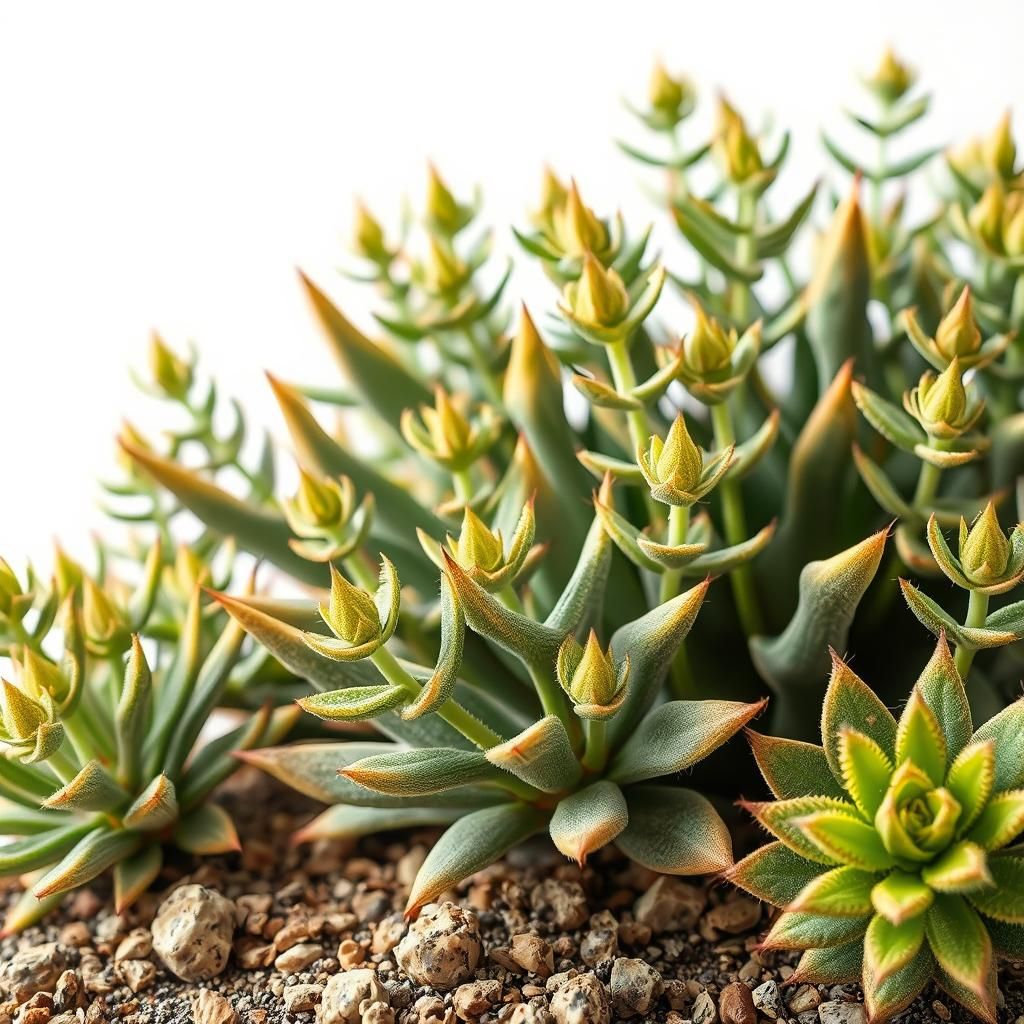Top Heat Tolerant Plants Australia: Thriving in Extreme Conditions

Australia's diverse climate presents unique challenges for gardeners, particularly in regions known for extreme heat. As temperatures soar, selecting the right plants can make all the difference between a thriving garden and a parched landscape. This article explores the top heat-tolerant plants that flourish in Australia's harsh conditions, highlighting their resilience and beauty. From vibrant flowers to hardy shrubs, these selections not only withstand the sweltering sun but also enhance the aesthetic appeal of outdoor spaces. Whether you're a seasoned gardener or a novice, discovering these plants can help you create a lush, sustainable garden even in the hottest months.
Heat Tolerant Plants for Australian Gardens
Australia's diverse climate can pose challenges for gardeners, particularly in regions experiencing extreme heat and prolonged drought conditions. Fortunately, there exists a variety of heat tolerant plants that thrive under these circumstances, offering both beauty and resilience. Some of these plants are native to Australia, while others have adapted well to local conditions. Incorporating these varieties into your garden helps reduce water consumption and encourages sustainable practices, while also providing habitats for local wildlife. Whether you're looking to create a vibrant landscape or simply maintain greenery during the scorching summer months, choosing the right heat tolerant plants can greatly enhance the success of your gardening efforts.
Benefits of Using Heat Tolerant Plants
Utilizing heat tolerant plants provides numerous advantages for Australian gardeners. Firstly, these plants are specifically adapted to withstand high temperatures and dry conditions, requiring less water for maintenance and promoting a more sustainable approach to gardening. Additionally, they offer resilience against pests and diseases, often leading to healthier landscapes. The increased use of these hardy varieties also helps in conserving biodiversity, supporting local ecosystems by attracting native insects and wildlife. Furthermore, heat tolerant plants can enhance the aesthetic appeal of gardens with vibrant colors and unique textures, ensuring that outdoor spaces remain visually striking even in the hottest months.
Native Australian Heat Tolerant Plant Species
Australia is home to a range of native plants that are remarkably heat tolerant. Species such as the Kangaroo Paw and Bush Tucker Plants not only thrive in Australia’s harsh climates but also offer cultural significance and edibility. The Flame Tree and Bottlebrush are other excellent examples, known for their stunning flowers and ability to endure drought. These native plants are typically low-maintenance and can adapt to various soil types while providing food and shelter to local wildlife. Utilizing these species can enhance garden sustainability and support the local ecosystem.
Top Heat Tolerant Plants for Dry Climates
When selecting plants for dry climates, it's essential to consider those with specific adaptations to conserve water. Succulents and cacti are well-known for their ability to store water and withstand extreme heat. Other popular options include Lavender, which not only adds fragrance but also thrives in hot, dry conditions, and Agave, known for its sculptural form and drought resistance. Ornamental grasses like Pennisetum and Lamb's Ear are also excellent choices that provide texture and movement in the landscape while requiring minimal irrigation. Choosing these plants can create a beautiful, water-efficient garden suited to Australia’s climate.
See also:
Landscape Design with Heat Tolerant Plants
Incorporating heat tolerant plants into landscape design can create functional and visually appealing spaces. Designers often integrate these plants into xeriscaping, a landscaping philosophy focusing on reducing water use through native and drought-resistant plants. Grouping plants based on their water needs and creating layers of textures and colors can enhance the overall aesthetics of a garden while minimizing maintenance. Utilization of hardscapes such as gravel paths and rock formations can also complement heat tolerant plants, while shade structures may be employed to protect vulnerable species during the hottest part of the day.
Maintenance Tips for Heat Tolerant Gardens
Maintaining a garden filled with heat tolerant plants involves specific strategies to ensure their continued health and vibrancy. While these plants are resilient, they still benefit from regular care. It’s important to establish a deep watering routine, particularly during the establishment phase, to encourage deep root growth. Mulching is also key, as it helps retain soil moisture and suppresses weed growth. Periodic pruning can encourage airflow and prevent overcrowding, which may lead to disease. Additionally, monitoring for pests and diseases is crucial; early detection and management can help maintain a healthy garden ecosystem.
| Plant Name | Key Attributes | Water Requirements |
|---|---|---|
| Kangaroo Paw | Vibrant flowers, attracts wildlife | Low |
| Flame Tree | Beautiful blooms, drought resistant | Medium |
| Lavender | Fragrant, drought tolerant | Low |
| Agave | Architectural foliage, low maintenance | Very Low |
| Pennisetum | Graceful plumes, robust | Low |
Understanding the Benefits of Heat Tolerant Plants in Australian Gardens
Heat tolerant plants are essential for Australian gardens, especially in regions where extreme temperatures prevail. These plants are adapted to survive and thrive in arid and hot conditions, reducing the need for excessive watering and maintenance. By incorporating heat tolerant plants into your garden, you are not only enhancing your landscape's aesthetics but also contributing to water conservation and creating a more sustainable environment. These plants often require minimal care and are excellent for gardeners looking to cultivate a resilient and robust garden despite the harsh climatic conditions.
Features of Heat Tolerant Plants
Heat tolerant plants commonly exhibit unique features that enable them to withstand high temperatures. These traits include deep root systems that allow for better moisture retention, thick waxy leaves that minimize water loss through transpiration, and an ability to enter a state of dormancy during the hottest months. These adaptations ensure that such plants can continue to function and survive even in the most challenging environments.
Best Heat Tolerant Plants for Australian Gardens
When selecting heat tolerant plants for your garden, consider options like the Australian native species, such as kangaroo paw and bush tomatoes, which are not only drought-resistant but also provide a unique and vibrant look. Succulents and cacti are other fantastic choices, as they thrive in hot, dry conditions, adding visual interest and requiring minimal water. Including a variety of these plants can make your garden both beautiful and sustainable.
See also:
Care Tips for Heat Tolerant Plants
To ensure the success of heat tolerant plants, proper care is essential. Initially, they may require consistent watering until established, but once their root systems develop, they become significantly more resilient. Mulching around the base can help retain soil moisture and regulate temperature. Moreover, it is wise to plant these species in locations that receive some shade during the hottest parts of the day, thus enhancing their overall survivability and promoting healthy growth.
Identifying Sun and Heat Stress in Plants
It’s crucial to be able to recognize the signs of sun and heat stress in plants, even among those bred for heat tolerance. Symptoms include wilting, leaf scorch, and discolored foliage. If you notice these issues, it is often wise to adjust their care regime by providing additional shade, ensuring adequate irrigation, or relocating them to a more suitable environment. Being proactive can help maintain the health and vitality of your garden.
The Role of Mulching in Heat Management
Mulching plays a pivotal role in managing heat in the garden. By applying a layer of organic or mineral mulch, you can help regulate soil temperature, retain moisture, and reduce evaporation. This reference to mulch not only helps heat tolerant plants to thrive but also alleviates competition from weeds, allowing your chosen plants to receive more nutrients and light. Therefore, implementing a good mulching strategy is vital for the success of heat-tolerant landscaping.
Questions from Our Readers
What are heat tolerant plants suitable for Australian climates?
Heat tolerant plants for Australian climates include species such as Kangaroo Paw, Australian native grasses, and New South Wales Christmas Bush. These plants are adapted to endure high temperatures and often require less water, making them ideal for the hot and dry conditions found in many regions of Australia.
How do I care for heat tolerant plants in Australia?
To care for heat tolerant plants in Australia, it is essential to provide adequate drainage and avoid overwatering, as many of these plants thrive in well-drained soils. Additionally, ensuring that they receive full sun during the day while protecting them from harsh winds can help maintain their health and vitality.
See also:
Can heat tolerant plants help with water conservation?
Yes, heat tolerant plants can significantly aid in water conservation as they are designed to survive on less water compared to traditional garden plants. By incorporating these species into gardens or landscapes, homeowners can reduce their overall water usage and still enjoy a vibrant outdoor space.
Where can I find heat tolerant plants in Australia?
Heat tolerant plants can typically be found at local nurseries, specialty garden centers, or through online retailers that focus on native Australian flora. Many of these sources provide a range of options suited for different regions, ensuring that gardeners can find plants that meet their specific climate needs.

If you want to read more articles like Top Heat Tolerant Plants Australia: Thriving in Extreme Conditions, we recommend you check out our Landscaping category.
Leave a Reply
Related Articles